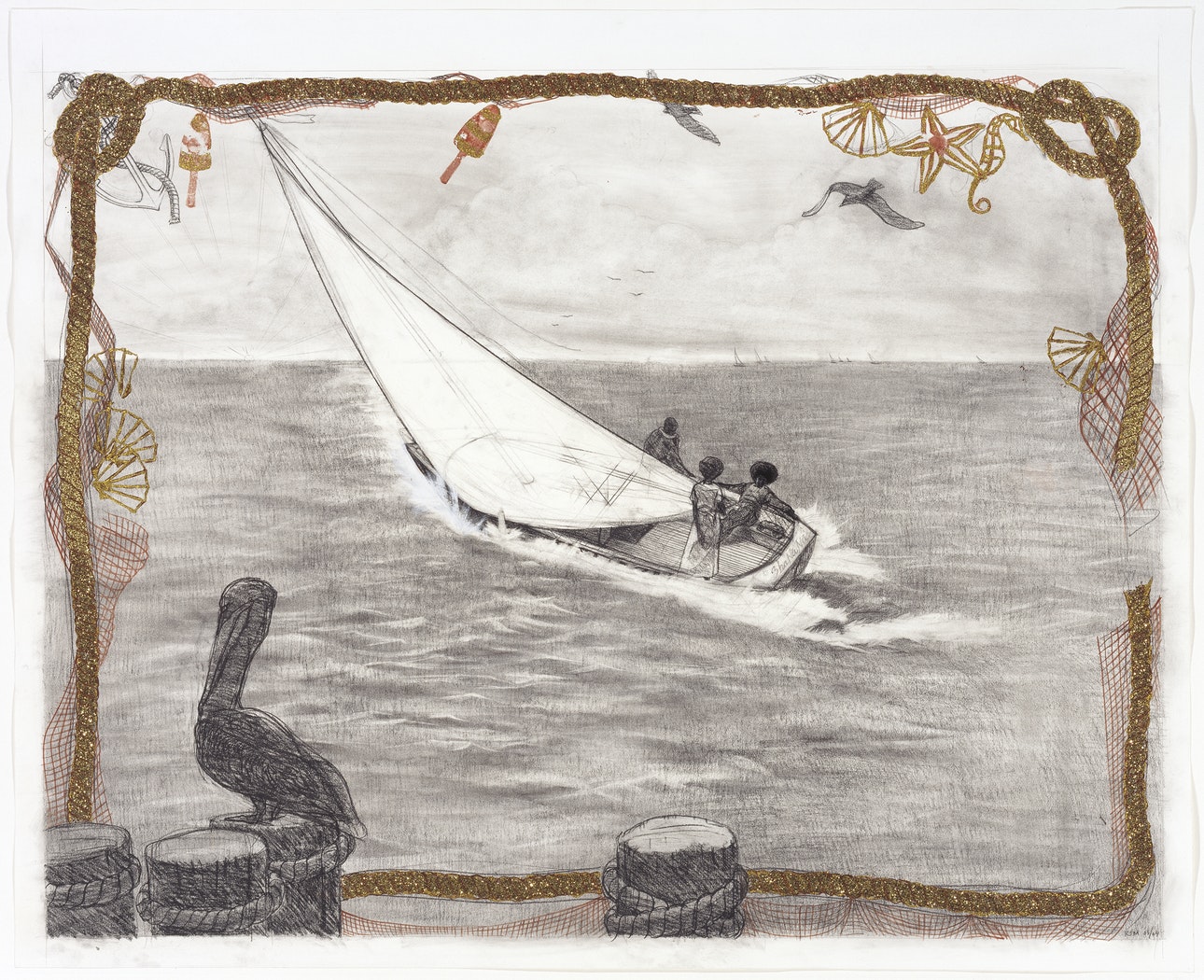Wail Song: or how a presumed corpse practices breathing

a child born in the water may take longer to
draw breath before they wake
we often dream of flying, a kind of weightlessness that carries us up up up. we know we are dreaming. outside the world of the dream we are afraid of heights, are careful to not look down, can feel our body mass, heavy. salt blood1. the people could fly2. until they couldn’t. salt kept us closer to the water. the water is the birthplace of new world blackness.
9 months ago our partner gave birth to our child, fully submerged in the water, the first few moments suspended. once removed from the water it took a while before the child would breathe, the doctor said this is normal, sometimes we wonder if black children are already aware of a world set on making their breathing an impossibility. we count so many years in the seconds before a first breath, something like a “living death”3, a middle, passage. we name our child Ocean.
and how many moments are given to the child?
how long before the child is a body, never to wake?
Ocean cries a full-throated cry, a rattle, long and full. do not hold the child too tightly, do not squeeze them. we make assessments of a lifetime of danger, something like scanning the water for sharks. an English name for a “strange fish.” a nomenclature developed by merchants over years on the water attempting to make an other so that the so-called human could hold its shape4. shark from “‘xoc’ pronounced ‘choke,’ from the Maya in the Caribbean.”5 we gasp, do not hold the child too tightly, there are sharks in the water.
is a child of the water, aboard the vessel,
a child at all? what is left in an un-child’s wake?
what is left in the un-making of the child? which is to say, what is left in the un-making of childhood? when the rent is too high for us to find lodging there. this is not an argument around innocence, the child is not innocent, a hollow word, an imaginary border. the child is an ocean, which is to say, possible.
who can rouse the breath like a mother? or hide it
like a hunted thing? a child is not a/wake.
breathe softer child, tuck our breathing beneath the water, though there be sharks there. make something of our body, itself a technology also. make a maroon, a saltwater wraith. make an underwater country Drexciya6 deep in the black atlantic. make our body part of the storm, unsettle the water.
wake the child while no one is looking, steal breath
through a passage the ledger cannot see. wake, wake
the child somewhere an account is not given. snatch
something from the water that was meant for the wake7.
the child is more than a body, which is to say multiple, which is to say not reducible to a presumed corpse, something already drowned. ocean, in the deep, ocean, in the boundless parts, ocean, is more than a burial ground, a wake fixed in some linear fantasy of time, Ocean, at the end of the world, at the morning after it, a cry, whistling, carried on the wind, through the water, a wail song teaching us to breathe.